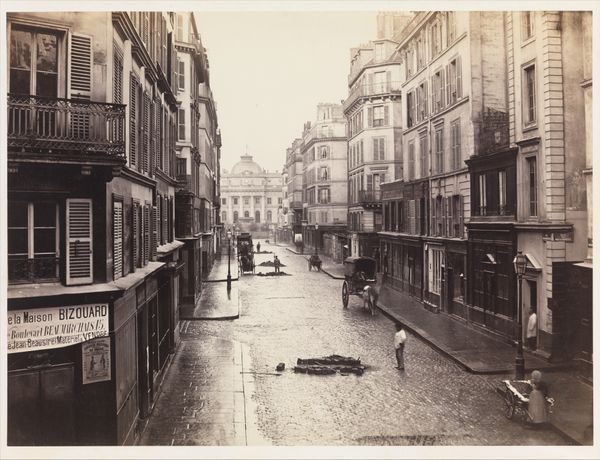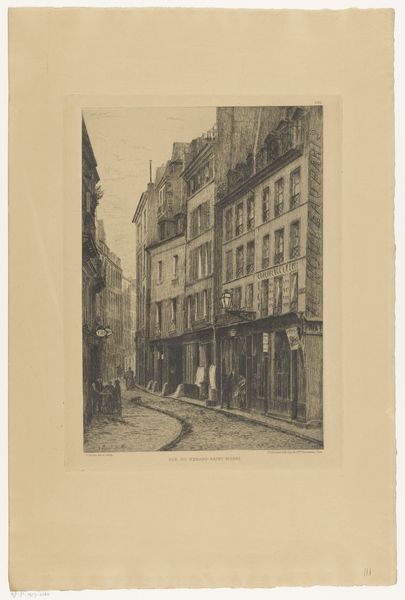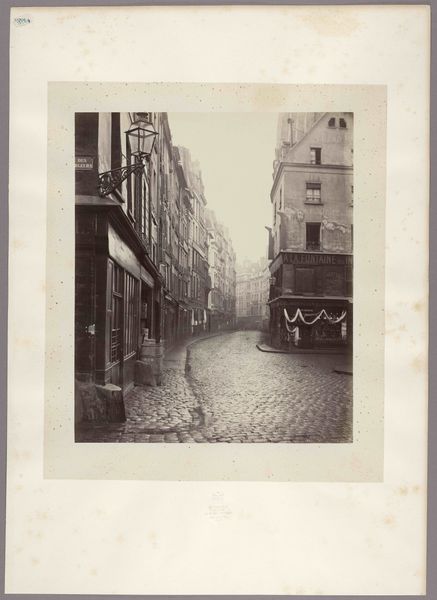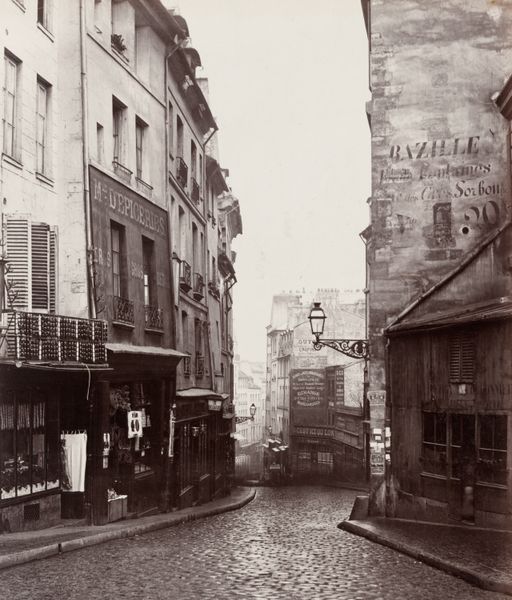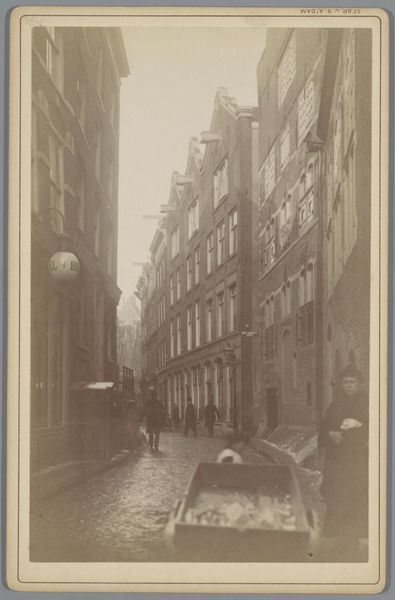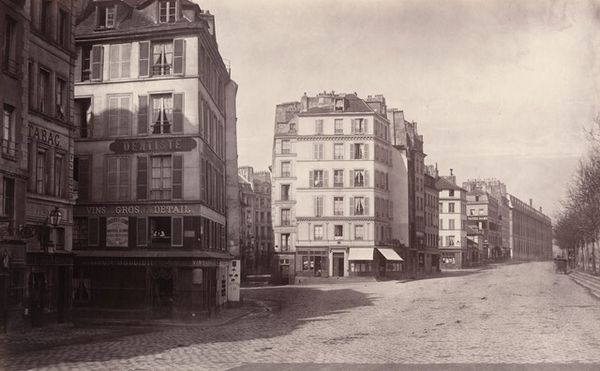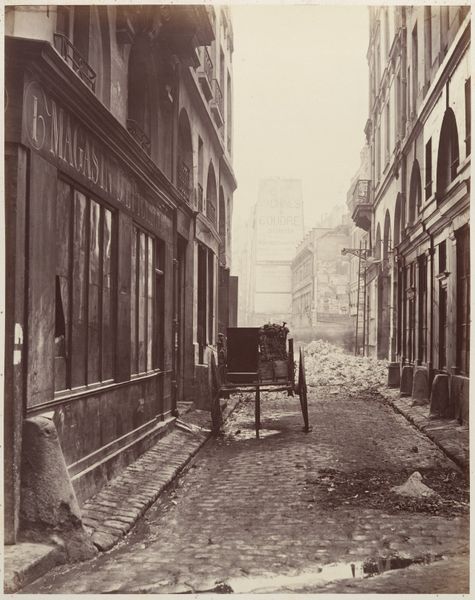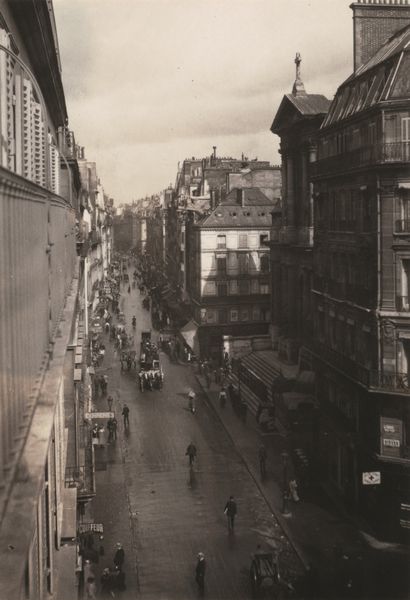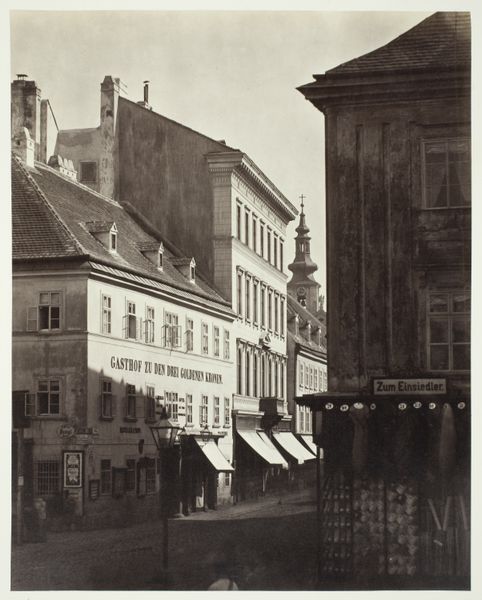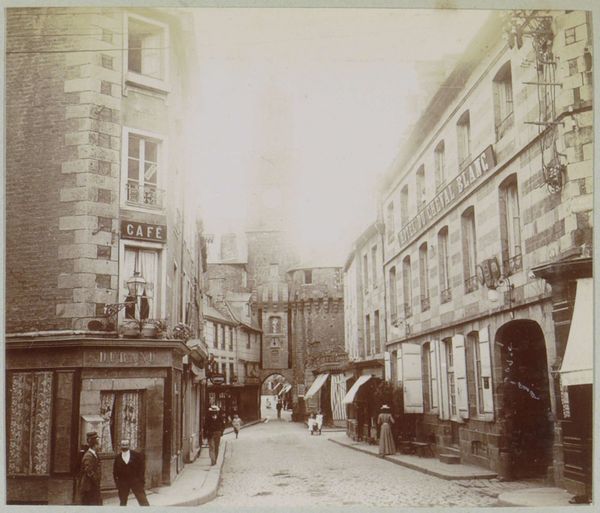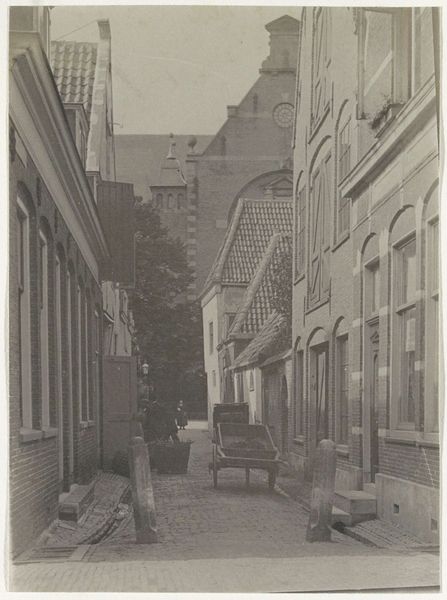
Rue de la Bûcherie, du cul de sac Saint-Ambroise (fifth arrondissement) 1866 - 1868
0:00
0:00
Dimensions: image/sheet: 32 x 27.1 cm (12 5/8 x 10 11/16 in.) mount: 60 x 42.5 cm (23 5/8 x 16 3/4 in.)
Copyright: National Gallery of Art: CC0 1.0
Curator: Let’s turn our attention to this photographic print, "Rue de la Bûcherie, du cul de sac Saint-Ambroise (fifth arrondissement)" captured by Charles Marville sometime between 1866 and 1868. Editor: My first thought is the palpable sense of texture; you can almost feel the rough cobblestones underfoot, and the density of the atmosphere conveyed through the gradations of grey. It's stark, yet intimate. Curator: Indeed, Marville masterfully utilizes the monochromatic palette to direct the viewer's gaze along the receding lines of the narrow street, framing a moment suspended between the past and the imminent transformations of Paris. Note how the verticality of the buildings is balanced by the horizontal thrust of the cobblestone street. Editor: I am struck by the labor embedded in the image. Look at the laden cart, the evidence of work, the provisioning of the city captured incidentally in a seemingly simple street view. And I think we should consider how Marville, as a photographer documenting these streets slated for demolition and renovation under Haussmann, becomes implicated in that very labor of transformation. Curator: That cart adds an essential point within the composition; it arrests the relentless perspective, and lends an intimate note. The play of light is beautifully articulated across architectural surfaces. The values move and gradate gradually so that no two shapes appear the same in tone, providing strong shape legibility. Editor: The image is as much about disappearance and urban renewal as it is about the preservation of architectural form. This area of Paris would have soon been unrecognisable and this photograph speaks volumes of the hard work behind these rapid, and sometimes ruthless changes. The layers of production – the quarrying of stones, construction, transport of materials – are subtly, powerfully evoked. Curator: Precisely, a careful formal reading of Marville’s technique reveals an inherent commentary on fleeting reality. Editor: And consideration of materials reveals so much about the complex and fraught social changes in this moment in Parisian history. It gives the buildings, and indeed the whole street, another voice. Curator: Indeed. It's interesting how differing lenses give different insight to our engagement of art. Editor: A beautiful dance of aesthetics and labour, isn't it?
Comments
No comments
Be the first to comment and join the conversation on the ultimate creative platform.

